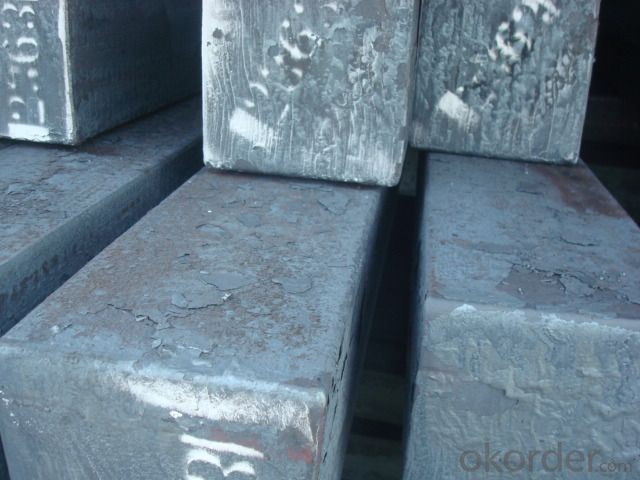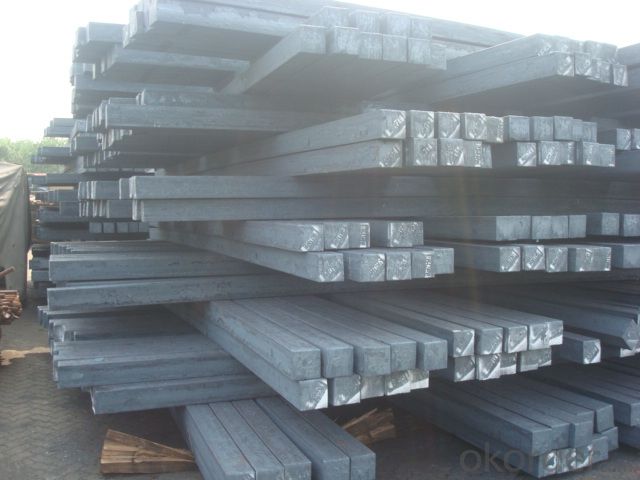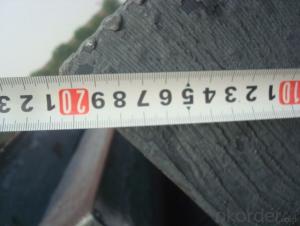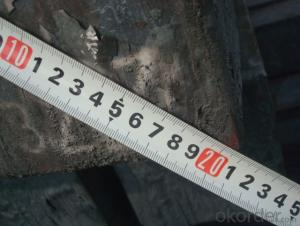Steel Bloom Manufactured by Big Blast Furnace
- Loading Port:
- Tianjin
- Payment Terms:
- TT OR LC
- Min Order Qty:
- 1000 m.t.
- Supply Capability:
- 100000 m.t./month
OKorder Service Pledge
OKorder Financial Service
You Might Also Like
Steel Bloom Manufactured by Big Blast Furnace
1.Structure of Steel Bloom Manufactured by Big Blast Furnace
Steel Bloom Manufactured by Big Blast Furnace is the raw material of all kinds of steel mill. Billet section of square, round, flat, rectangular and abnormity, etc Several, mainly related to shape of rolled products. Simple rolled section steel, choose cross section of square billet or rectangular billet. rolling The sector products such as flat steel, Angle steel, select the rectangular billet or slab. Had better profiled billet when production beams, channels, and in rolling process Lines and improve the yield. The raw material of round billet is the production of seamless tube.
2.Main Features of Steel Bloom Manufactured by Big Blast Furnace
Steel Bloom Manufactured by Big Blast Furnace section size should meet the requirements of rolling deformation and finished product quality, but also roll strength and biting condition of restrictions. General steel Billet section height H. And the roll diameter D The ratio of the ( namely H/D) Should be less than or equal to zero 0.5 . Length of steel billet by finishing temperature, Rolling time and the length of the product Or times ruler. When heated too long accident prone to bump the furnace wall of steel, too short, furnace bottom utilization rate is not high, influence the heating furnace production. For the production Choose a variety of steel and steel billet, should consider the affinities of billet, as far as possible in order to improve the productivity of the roughing mill, simplify the stock management of workshop.
3. Steel Bloom Manufactured by Big Blast Furnace Images
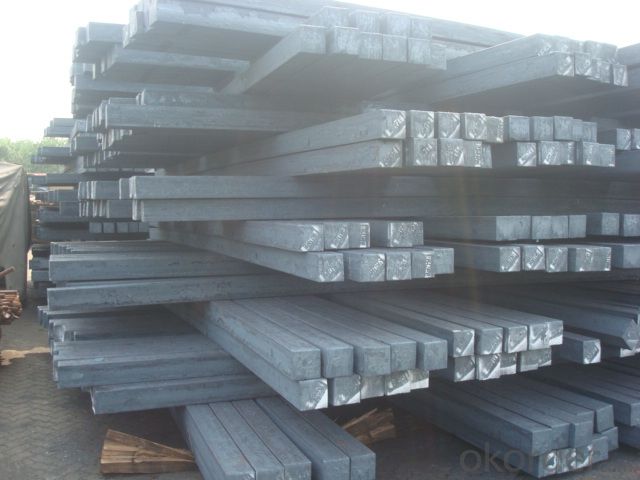
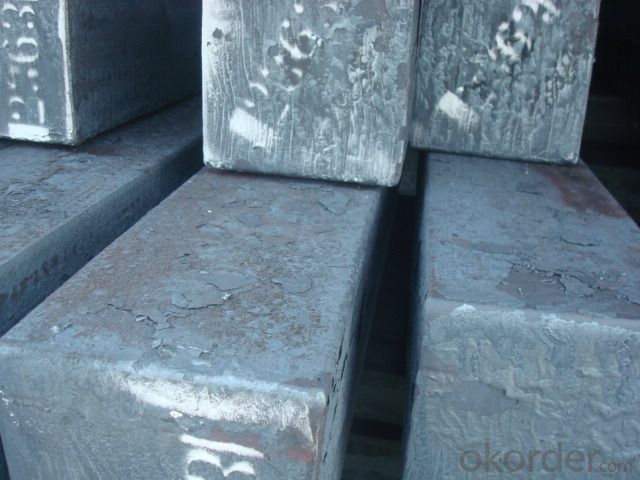
4. Steel Bloom Manufactured by Big Blast FurnaceSpecification
Steel Billet Manufactured by Blast Furnace rolled steel, after processing can be used for mechanical parts, forging parts, processing all kinds of steel, steel Q345B channel steel, wire rod is the role of the billet. Steel billet is used in the production of semi-finished products, generally cannot be used directly for the society. Steel billets and steel are strictly divided into standard, cannot decide to whether the business enterprise of the final product, and according to unified standards to perform the whole society. Typically, billet and the steel is relatively easy to distinguish, but for some steel billet, and have the same specification and same steel purposes (such as rolling tube billet), whether can be used for other industries, whether through steel processing process, whether through a finished product rolling mill processing to distinguish
Material standard The editor Range of thickness: 150-240 - mm + / - 5 mm width range: 880-1530 - mm + / - 20 mm Length: 3700-10000 - mm + / - 500 - mm Cross-sectional size: 64 * 64; 82 * 82; 98 * 98; 124 * 124; 120 * 150; 152 * 164; 152 * 170 mm Length: 9000 mm Section of tolerance: billet: 1.0 + / - 2.0-1.0 + / - 1.0 mm slab: width: + / - 2.0 mm thickness: + / - 3.0 mm The length tolerance: + / - 200 mm Section diagonal tolerance: 3.5-8.0 MM Billet section size protrusions requirements: < 1242 mm, do not allow; > = 1242 mm, < = 2 mm 1242 mm, < = 3 mm Beheading (shear) extension deformation: < 1242 mm billet: no control; The slab: < = 15 mm Surface tilt: no more than billet section 0.1 Bending: every 1 m length is not more than 10 mm The distortion: length < = 5 m, < = 11. ; The length of the < = 7.5 M, < = 5. Material % 3 sp/PS chemical composition: C Mn Si S P
5.FAQ of Steel Bloom Manufactured by Big Blast Furnace
①How about your company?
A world class manufacturer & supplier of castings forging in carbon steel and alloy steel,is one of the large-scale professional investment casting production bases in China,consisting of both casting foundry forging and machining factory. Annually more than 8000 tons Precision casting and forging parts are exported to markets in Europe,America and Japan. OEM casting and forging service available according to customer’s requirements.
②What is the advantage of the continue Casting steel Bloom comparing to the die casting steel Bloom?
Compared with die casting, continuous casting has the advantages of: 1. To simplify the Steel Bloom The production process 2. Improve the metal yield 3. Improve the quality of the Bloom 4. Reduces the steel worker's labor intensity 5. Save energy and reduce consumption
Steel Bloom is produced by the method of through three processes: It is through the steelmaking system of continuous casting equipment, directly by the molten steel pouring into Bloom; The second is the steelmaking system in the production of steel ingot casting Bloom through system of steel rolling rolling equipment or processing of steel semi-finished products; Three is the steelmaking system production of steel ingot by forging the semi-finished product processing equipment.
③How about the Q235 Grades?
Q235:A、B、C、D(GB700-88)
Q235A:C0.14~0.22% Mn0.30~0.65Si≤0.30S≤0.050P≤0.045
Q235B:C0.12~0.20% Mn0.30~0.670Si≤0.30S≤0.045P≤0.045
Q235C:C≤0.18% Mn0.35~0.80Si≤0.30S≤0.040P≤0.040
Q235D:C≤0.17% Mn0.35~0.80Si≤0.35S≤0.040P≤0.035
- Q:Are steel billets magnetic?
- Yes, steel billets are magnetic. Steel is an alloy primarily composed of iron, which is a ferromagnetic material. This means that it can be magnetized and therefore exhibits magnetic properties. Steel billets, being solid blocks or bars of steel, retain the magnetic properties of the material they are made from.
- Q:Can steel billets be used in the production of pipes?
- Yes, steel billets can be used in the production of pipes. Steel billets are semi-finished metal products that can be further processed into various shapes, including pipes. The billets are heated, pierced, and elongated to form seamless pipes or rolled and welded to create welded pipes.
- Q:How do steel billets contribute to the manufacturing of medical devices?
- Steel billets contribute to the manufacturing of medical devices in various ways. Firstly, steel billets serve as the raw material for the production of medical devices. These billets are used as a starting point in the manufacturing process, where they are heated and shaped into the desired form using techniques like forging, casting, or rolling. The use of steel billets in medical device manufacturing offers several advantages. Steel is known for its strength, durability, and corrosion resistance, making it an ideal material for the production of medical devices that need to withstand rigorous use and maintain their integrity over time. Additionally, steel offers excellent biocompatibility, meaning it is well-tolerated by the human body, reducing the risk of adverse reactions or complications when the medical devices are implanted or used in surgical procedures. Moreover, steel billets can be easily machined and formed into complex shapes, allowing manufacturers to create intricate medical devices such as orthopedic implants, surgical instruments, or prosthetic components. Steel's versatility and malleability enable the production of devices with precise dimensions and fine details, ensuring optimal functionality and performance. Furthermore, steel billets contribute to the manufacturing of medical devices by providing a cost-effective solution. Steel is widely available and relatively affordable compared to other materials used in the medical industry, making it an attractive choice for manufacturers. The ability to produce medical devices from steel billets at a reasonable cost contributes to the accessibility and affordability of healthcare worldwide. In conclusion, steel billets play a crucial role in the manufacturing of medical devices. They provide a strong, durable, and biocompatible material that can be easily shaped and machined into complex forms. Steel's properties contribute to the production of high-quality medical devices that are capable of withstanding demanding applications while ensuring patient safety and cost-effectiveness.
- Q:How are steel billets used in the manufacturing of electrical appliances?
- Steel billets are essential for the manufacturing process of electrical appliances, serving as semi-finished steel products in a rectangular shape. They are used as raw materials for various components of electrical appliances. One primary application of steel billets in electrical appliance manufacturing is in producing motor cores. Motor cores are crucial parts of electric motors found in appliances like refrigerators, washing machines, and air conditioners. The steel billets are processed and shaped into laminated cores, which are then stacked together to form the motor core. These cores provide the necessary structural support and magnetic properties for generating rotational motion. In addition, steel billets are also used in manufacturing electrical wires and cables, which are vital for transmitting electricity within appliances. The billets are processed and drawn into thin wires, which are then insulated and bundled to create the required electrical connections within the appliances. Furthermore, steel billets are utilized in making housings and frames for electrical appliances. These components offer structural support and protection for the internal electrical parts. The billets are processed and molded into various shapes and sizes to create durable and rigid housings capable of withstanding everyday stress and environmental conditions. Overall, steel billets play a crucial role in the manufacturing of electrical appliances, providing the necessary raw materials for motor cores, electrical wires, cables, and housing components. Their strength, durability, and magnetic properties make them an ideal choice for ensuring the quality and performance of electrical appliances.
- Q:What are the main factors affecting the quality of steel billets?
- There are several main factors that can significantly affect the quality of steel billets. These factors include the composition of the steel, the temperature and time of the heating process, the cooling rate, and the presence of impurities. Firstly, the composition of the steel plays a crucial role in determining its quality. The presence of certain elements such as carbon, manganese, and silicon can affect the mechanical properties of the steel, including its strength and hardness. The proper control and balance of these alloying elements are essential to ensure the desired quality of the steel billets. Secondly, the temperature and time of the heating process during the production of steel billets are critical factors. The heating process must be carefully controlled to achieve the optimal temperature for the desired transformation of the microstructure. Overheating or underheating can lead to the formation of undesirable phases or an inconsistent microstructure, which can negatively impact the quality of the billets. The cooling rate is another important factor affecting the quality of steel billets. The cooling process needs to be controlled to achieve the desired microstructure and mechanical properties. Too rapid cooling can result in the formation of brittle phases or residual stresses, while slow cooling can lead to coarse-grained structures with reduced strength. Furthermore, the presence of impurities in the steel can significantly affect its quality. Impurities such as sulfur, phosphorus, and non-metallic inclusions can decrease the mechanical properties and promote the formation of defects in the steel billets. Therefore, strict control of the raw materials and the implementation of effective refining techniques are necessary to minimize the presence of impurities. In conclusion, the main factors affecting the quality of steel billets are the composition of the steel, the temperature and time of the heating process, the cooling rate, and the presence of impurities. By carefully controlling and optimizing these factors, steel manufacturers can produce high-quality billets that meet the desired specifications and performance requirements.
- Q:How are steel billets used in the production of molds?
- Steel billets are an important component in the production of molds as they serve as the raw material for creating the mold itself. The process begins by selecting a suitable steel billet, which is typically a solid rectangular or square piece of steel. Once the steel billet is chosen, it undergoes a series of manufacturing processes to transform it into a mold. Firstly, the billet is heated to a high temperature, known as the forging temperature, which makes it malleable and easier to work with. This heating process is crucial as it allows the steel to be shaped and molded into the desired form. After heating, the steel billet is subjected to a variety of shaping techniques such as rolling, pressing, or hammering. These methods help to shape the steel into the desired mold design, which could be a simple or complex shape depending on the application. Once the desired shape is achieved, the steel billet is cooled down and undergoes further processes such as machining, grinding, and polishing to refine the mold's surface finish and dimensional accuracy. This ensures that the mold is precise and capable of producing high-quality products. Overall, steel billets are used in the production of molds as the base material that is shaped and refined to create a customized mold design. These molds are then used in various industries such as automotive, aerospace, and manufacturing to produce a wide range of products.
- Q:How are steel billets used in the manufacturing of gears?
- Gears, which are mechanical devices that transmit power and motion, rely heavily on steel billets for their production. These billets, obtained through casting or rolling, are semi-finished steel products that serve as the foundation for gear manufacturing. To begin the process, the steel billets are heated to a specific temperature and then subjected to mechanical force, such as hammering or pressing, to shape them into the desired gear form. Once the initial shape is achieved, the billets undergo various machining operations, including milling, drilling, and grinding, to remove excess material and create precise dimensions and features. Steel billets offer numerous advantages in gear manufacturing. Their durability and strength allow them to handle heavy loads and high-speed rotations, while their excellent wear resistance ensures long-lasting performance. Additionally, steel billets can be easily machined to achieve intricate gear designs, enabling customization and optimization of gear performance. In conclusion, steel billets are indispensable in gear manufacturing as they provide the necessary strength, durability, and precision for gears to function effectively. Through forging and machining processes, these billets are transformed into gears capable of efficiently transmitting power and motion.
- Q:What is billet?
- At present, the casting process has been basically eliminated.Mainly from the shape of two:Slab: the ratio of section width and height is larger, which is mainly used for rolling plate.Billet: cross section width, height equal, or difference is not big, mainly used for rolling steel, wire.
- Q:How are steel billets used in the manufacturing of power transmission towers?
- Steel billets are an integral component in the manufacturing of power transmission towers. These towers, which are used to support electrical power lines, require a strong and durable material to withstand the weight and stress of the overhead cables. Steel billets, which are essentially semi-finished steel products, serve as the raw material for the fabrication of power transmission towers. The billets are typically made of high-quality steel, which possesses excellent strength and structural properties. The manufacturing process begins with the selection and preparation of steel billets. These billets are heated to a specific temperature, known as the forging temperature, in a furnace. Once the billets reach the desired temperature, they are transferred to a rolling mill, where they are shaped and formed into the required sections for the power transmission towers. Using various rolling techniques, the heated steel billets are transformed into long, slender sections known as angles, channels, or I-beams. These sections are carefully crafted to provide the necessary structural integrity and load-bearing capacity required for power transmission towers. Once the steel sections are formed, they undergo further processes such as cutting, drilling, and welding to create the tower's components. These components include the legs, braces, cross arms, and other reinforcements that make up the tower structure. The steel billets used in the manufacturing of power transmission towers are crucial for ensuring the towers' strength, stability, and longevity. Steel's high strength-to-weight ratio makes it an ideal material for supporting the weight of the cables and withstanding external forces such as wind and ice loads. Additionally, steel's resilience and durability make it capable of withstanding harsh environmental conditions, including extreme temperatures and corrosive elements. In conclusion, steel billets are a fundamental material used in the manufacturing of power transmission towers. Through a series of heating, rolling, and fabrication processes, these billets are transformed into the various structural sections and components that make up the towers. The use of steel ensures that the power transmission towers possess the necessary strength, stability, and resilience to support the electrical power lines effectively.
- Q:20 what is the difference between manganese silicon steel billet and Q235 billet?
- 20 manganese silicon steel billet for high strength steel,Q235 billet is almost the most common steel, requiring the lowest.
1. Manufacturer Overview |
|
|---|---|
| Location | |
| Year Established | |
| Annual Output Value | |
| Main Markets | |
| Company Certifications | |
2. Manufacturer Certificates |
|
|---|---|
| a) Certification Name | |
| Range | |
| Reference | |
| Validity Period | |
3. Manufacturer Capability |
|
|---|---|
| a)Trade Capacity | |
| Nearest Port | |
| Export Percentage | |
| No.of Employees in Trade Department | |
| Language Spoken: | |
| b)Factory Information | |
| Factory Size: | |
| No. of Production Lines | |
| Contract Manufacturing | |
| Product Price Range | |
Send your message to us
Steel Bloom Manufactured by Big Blast Furnace
- Loading Port:
- Tianjin
- Payment Terms:
- TT OR LC
- Min Order Qty:
- 1000 m.t.
- Supply Capability:
- 100000 m.t./month
OKorder Service Pledge
OKorder Financial Service
Similar products
New products
Hot products
Hot Searches
Related keywords


